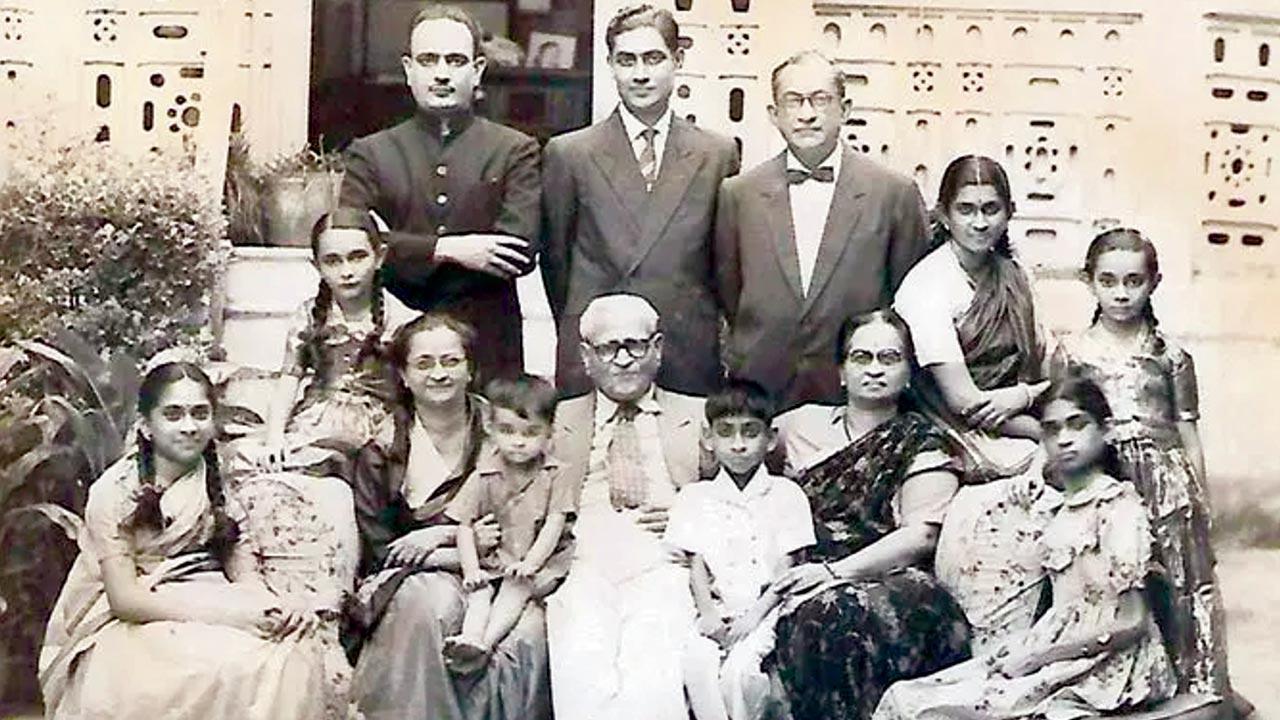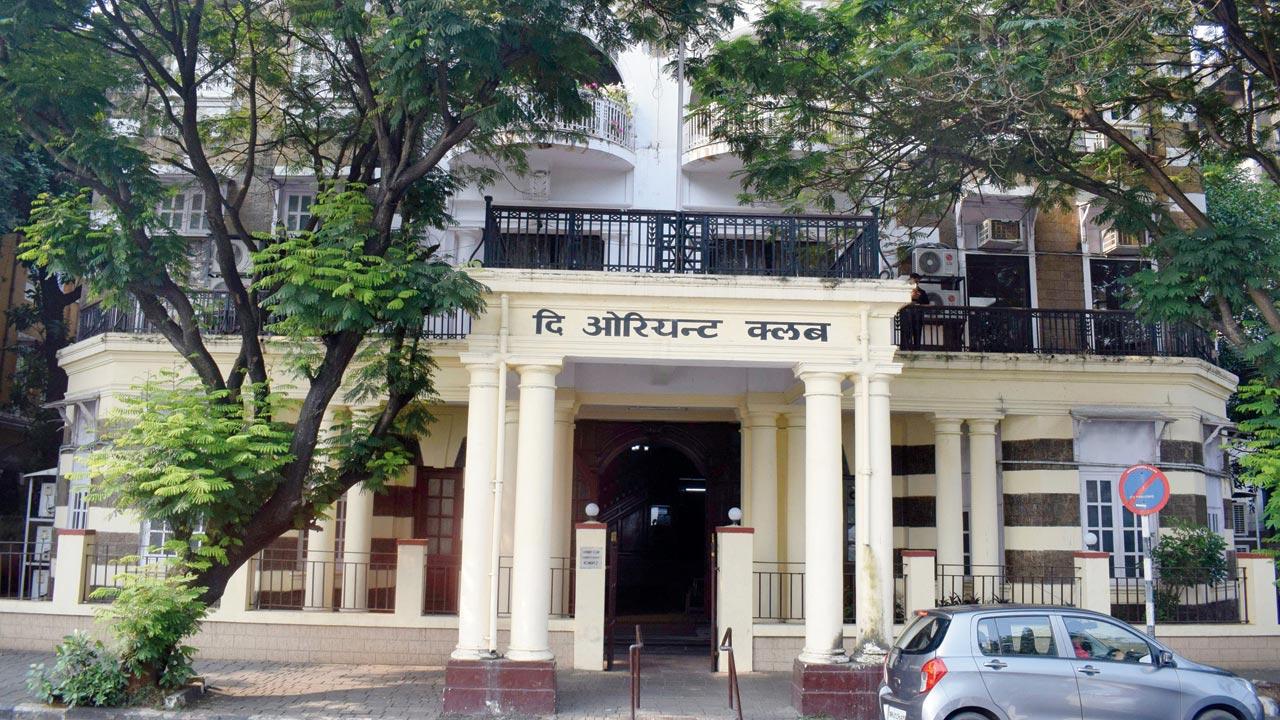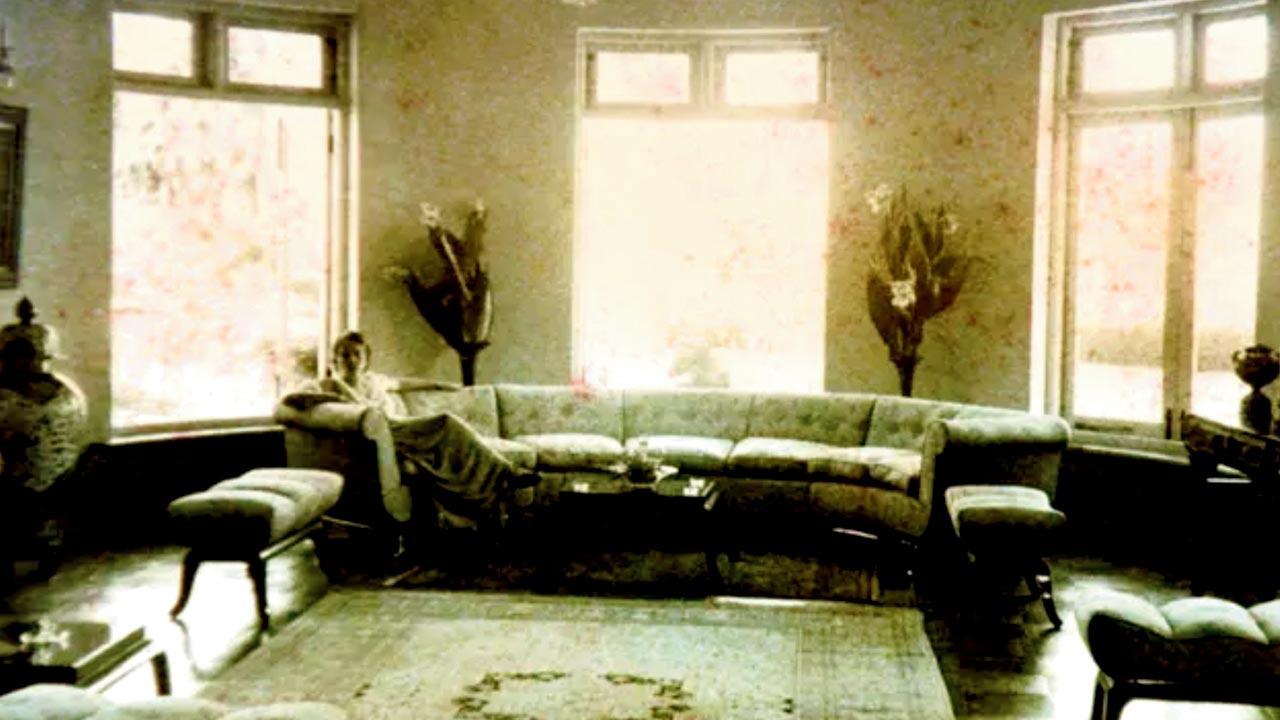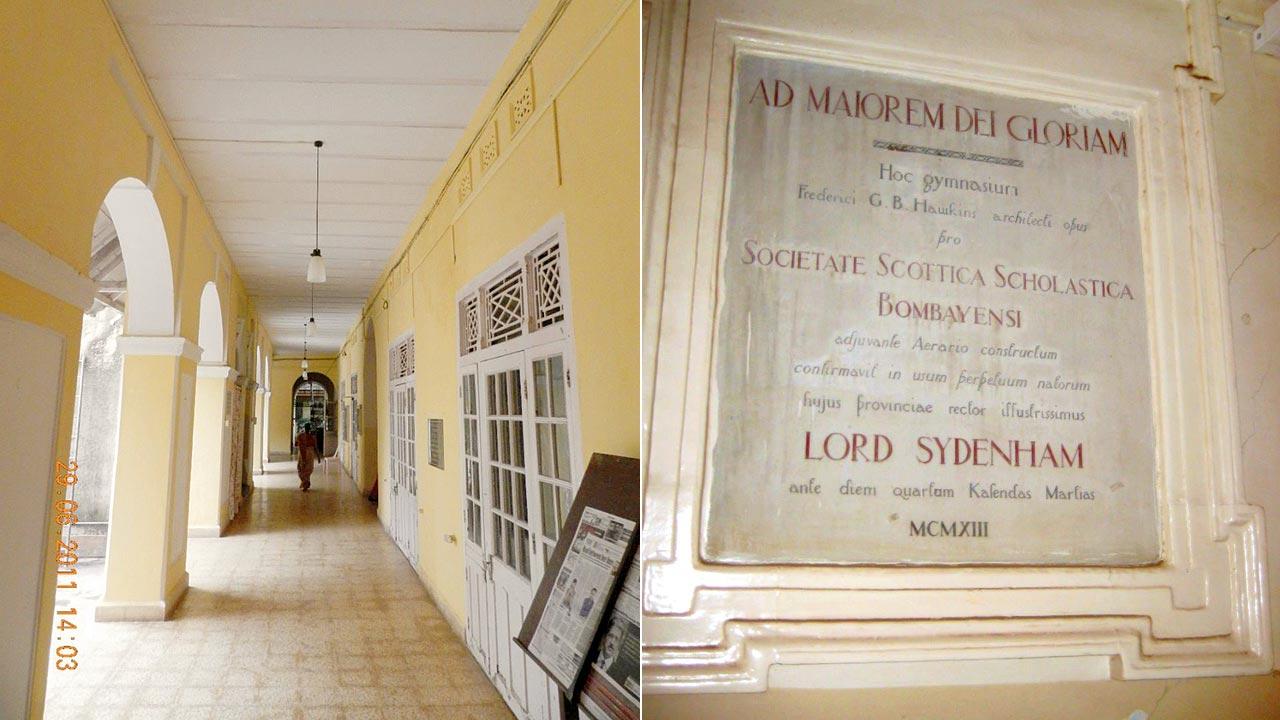Imprinted on the walls of public buildings and private residences, as well as Mumbaikars’ minds, Latin phrases across town continue to have an edifying, sonorous impact

A family portrait of Dr Gopalrao Deshmukh (seated centre), whose guiding philosophy is enshrined in the GS Medical College motto, “Non sibi, sed omnibus (Not for self, for all)”
 It's only all bang bang now!” That was the late Fr Peter Ribes, the last of Mumbai’s distinguished Latin tutors, ruing the loss of what he considers the three most beautiful languages gifted to man. “Latin, Greek and Sanskrit have few takers today,” he once said, giving me a copy of 32 Brain Shorts: Stories to Set You Thinking, the fifth book he authored bravely amid rapid macular degeneration. “I call the modern Babel I hear around us ‘bang bang’ languages. They are simply soulless,” he reiterated—unlike the sonorous Latin this Spanish priest taught to generations of students in schools like St Stanislaus and St Mary’s from 1950 to the 1980s.
It's only all bang bang now!” That was the late Fr Peter Ribes, the last of Mumbai’s distinguished Latin tutors, ruing the loss of what he considers the three most beautiful languages gifted to man. “Latin, Greek and Sanskrit have few takers today,” he once said, giving me a copy of 32 Brain Shorts: Stories to Set You Thinking, the fifth book he authored bravely amid rapid macular degeneration. “I call the modern Babel I hear around us ‘bang bang’ languages. They are simply soulless,” he reiterated—unlike the sonorous Latin this Spanish priest taught to generations of students in schools like St Stanislaus and St Mary’s from 1950 to the 1980s.
ADVERTISEMENT
That absolute, acknowledged authority on classically nuanced Latin knew not a syllable of English when he first stepped on Bombay soil 80 years ago as a young clergyman. Recounting with a smile how he happened to be “fortuitously sent to India”, Fr Ribes revealed he was raised in a Barcelona family of lawyers, doctors and engineers. He struck out differently, deciding to quietly step out into the world as a missionary. Serving communities in the neighbourhoods he was assigned to, Ribes would tell local municipal officials in chaste Marathi, “Mee tumchyapeksha jaasta Indian aahe (I’m more Indian than you).” They invariably agreed it was true.
 The Orient Club at Girgaon Chowpatty, where the porchway message reads “Absit Invidia (May envy be lacking, or No ill-will intended)”. File pic
The Orient Club at Girgaon Chowpatty, where the porchway message reads “Absit Invidia (May envy be lacking, or No ill-will intended)”. File pic
The early Jesuits have left legacies of profundity. It is five decades since Fr Ribes finished teaching a final class the intricacies of this fine language, with an appreciation of stirring passages from epics like Virgil’s Aeneid and Julius Caesar’s Commentarii de Bello Gallico—commentaries on the Civil and Gallic Wars. “He reached out to each and every one of us with ease. It was magical how he made a supposedly dead language come alive,” recalls Dallas Pereira, a former pupil.
After I first met Fr Ribes (in the early 2000s, writing a series of articles on the fistful of surviving Spanish priests of Mumbai), I have begun to keenly observe Latin mottos and inscriptions everywhere I go, whether working or just wandering. Looking out for these has resulted in wonderful learnings, with a few phrases memorably etched in public monuments and my mind.
Treading mazdoor turf in Agripada—the “pada (hamlet) of the Agris”, wedged tight between west Byculla and east Bombay Central where Agri cultivators settled—has thrown up some classic gems. Close to Procter House here, on Dr Leela Melville Road, is the Missionary Settlement for University Women (MSUW), a hostel for collegians. “The design typology of missionary buildings like the MSUW and YMCA Proctor ensured that these properties had good spaces in the hostel compounds, which was needed in an otherwise dense area. They abutted playgrounds and were planned intelligently, with the open spaces enabling a better quality of life,” says Vikas Dilawari, who restored this landmark. Embedded in marble at the entrance is the year of establishment, 1913, with the Society of Jesus motto, “Ad maiorem Dei gloriam (For the greater glory of God)”. The sight of six pretty rain trees outside makes the heart veritably sing. Tragic how one can keep a literal count, because green cover is stripped by the day in the redevelopment hell we are flung into.
 Lady Jerbai Mody in her family’s 1942-built home deriving its name from “Dum spiro, spero (While I breathe, I hope)”. Pic Courtesy Feroza & Jimmy Mody
Lady Jerbai Mody in her family’s 1942-built home deriving its name from “Dum spiro, spero (While I breathe, I hope)”. Pic Courtesy Feroza & Jimmy Mody
Up the street looms another lovely Latin learning. “In hoc signo vinces (In this Sign thou shalt conquer)” adorns a wall of St Joseph’s Home and Nursery. Managed by the Congregation of Daughters of the Cross, it extends a variety of facilities, from a daycare creche to Class X schooling for girls. It used to be a foundling home in 1863, we were informed by Sister Renita Pinto, who has headed the school for decades, after being its student.
Not far from Agripada, the seminary located in Parel-Bhoiwada from 1936—till it was shifted to Goregaon—cemented the city’s Jesuit-fostered educational activities. Invoking the saints Anthony of Lisbon and Francis Xavier, its curriculum comprised language studies (English, Latin, Greek), apologetics and history. The departments of philosophy, humanities and theology were created from 1938 to 1943.
 The Missionary Settlement for University Women (MSUW) hostel, with a line embedded in marble stating, “Ad maiorem Dei gloriam (For the greater glory of God)”. Pic Courtesy Vikas Dilawari
The Missionary Settlement for University Women (MSUW) hostel, with a line embedded in marble stating, “Ad maiorem Dei gloriam (For the greater glory of God)”. Pic Courtesy Vikas Dilawari
Further south, 39 Pedder Road was the address of the extraordinary Gopalrao Deshmukh, responsible for three radical women’s rights laws, co-founding the Indian Medical Association, becoming Mumbai’s first mayor post-1947, and the force behind KEM Hospital. In London for his MD-FRCS, he travelled to Birmingham to observe pancreatic specialist Jordan Lloyd, who threatened to resign if Deshmukh was not appointed his house surgeon. Prejudice prevented a non-Englishman from winning the post. Returning to pursue both a practice and politics, he operated from KEM Hospital, Parel. Upon Deshmukh urging Seth Gordhandas Sunderdas’ descendants for support, GS Medical College opened in 1926. Its motto seems to underline the good doctor’s guiding philosophy and ethics of the day: “Non sibi, sed omnibus (Not for self, for all)”.
City builders and business benefactors abundantly adopted and adapted Latin lines characterising enterprise. Within the sturdy gates of Rustom Baug in Byculla, a rather arresting logo is emblazoned on the façade of its buildings. The words “In Deo fide et perseverantia (Faith in God and perseverance)” circle a hand holding a hammer—a proud symbol of industry doubling as the registered trademark of the illustrious company, Nowrosjee Wadia & Sons.
A study of personally appropriated mottos takes us to the formative years that would go on to define Gujarati journalism in the country—thanks largely to the pioneering press clan of the Marzbans. An active member of the Bombay Municipal Corporation, Jehangir Behramjee (JB) Marzban–the father of satirist Pirojsha (“Pijam”) Jehangir Marzban and grandfather of playwright-director Adi Marzban–was the first Parsi journalist to be honoured by the government with a CIE, Companion of the Indian Empire. Despite championing women’s education, JB did hold other reactionary views. His motto for social reform, and as a policy for the paper, “Festina lente (Hasten slowly, or Proceed with prudence)”, was an oxymoron in wisdom though. This phrase was preferred by grand civilizations and dynasties, particularly the emperors Augustus and Titus, as well as the Medicis. The Roman historian Suetonius made known that Augustus deplored rashness in military affairs.
Other lines resonate from rich Latin originals. Profiling the iconoclast architect and Swatantra Party founder, Piloo Mody, made me notice the name that his father, Sir Homi Mody, gave the 1942-built Carmichael Road home he and Lady Jerbai shared with their sons: Spiro Spero. Engraved on that gatepost wall of what is now the Japanese Consulate, a pithy but poignant maxim gleams softly on a plaque. Spiro Spero is derived from “Dum spiro, spero (While I breathe, I hope)”. The ancestral bungalow’s Spanish-inspired contours held together rooms replete with rare statuary, richly brocaded sofas, Persian rugs and Chinese chintz, crystal vases spilling with canna lilies and chrysanthemums, a library laid with panther skin on parquet and the terrace room with a smooth dance floor ringed by built-in seats.
The architect for The Orient Club, which opened at Girgaon Chowpatty on May Day in 1900, was Charles Frederick Stevens, son of the legendary FW Stevens who created the Municipal Corporation Building and Victoria Terminus. The words “Absit Invidia (May envy be lacking, or No ill-will intended)” are displayed in the porchway of this exclusive gentlemen’s club where entry was strictly by invitation. It also snootily accepted only members’ wives considered capable of polished conversation and exhibiting correct cutlery etiquette. Among the elite few was Sherbanoo Ebrahim, the highly educated daughter of the first Ismaili Khoja baronet, Sir Currimbhoy Ebrahim.
Fr Ribes was naturally nostalgic as he explained Gregorian chants, echoed in the noble notes of the St Stanislaus School motto, “Ad maiora natus (Born for greater things)”, from “Ad maiora natus sum (We are born to aim for better things)”. Change is inevitable, he agreed. “But we are trapped in an age of information, no formation. Communication technology has made us closer to each other and yet so distant. There is terrifying loneliness. Too many sad souls sit in pews, on park benches, everywhere.”
Struggling to stay cheerful, trying not to dwell on times past, he mistily lapsed into lyrical lines, seeking solace in their cadence. “We must celebrate the antiquities. Latin is at the root of Western culture, Greek at the root of Eastern culture. The words are unimaginably expressive of a range of emotions and experiences. Over 60 per cent of English is Latin. It stems from more Latin than Saxon words. Their structure and syntax make these inflected languages challenging.” Not to mention grand, I whisper to myself, watching him cover a blackboard with the axiom “Audentes fortuna juvat (Fortune favours the brave)”, which of course points straight to the root of the adjective “audacious”.
From where we sat down to talk, my eyes feasted on the exquisite stained-glass windows of the consecrated St Peter’s Church. They glowed luminous in the crisp mid-morning sun. The meditative mood of the moment compelled me to ask the master to choose his favourite dictum to live by. He responded with pitch-perfect profundity: “Noverim te, noverim me (May I know you, may I know myself)”.
He asked which college I had attended. Delighted on discovering that St Xavier’s was my alma mater, he softly mouthed, “Provocans ad volandum (provoking to flight)”, which I too uttered in unison. The college crest shows a mother eagle encourage her fledglings to soar free. We’d like to think we have taken wing well.
Author-publisher Meher Marfatia writes fortnightly on everything that makes her love Mumbai and adore Bombay. You can reach her at meher.marfatia@mid-day.com/www.meher marfatia.com
 Subscribe today by clicking the link and stay updated with the latest news!" Click here!
Subscribe today by clicking the link and stay updated with the latest news!" Click here!







